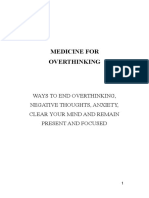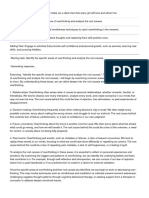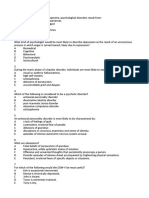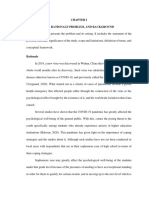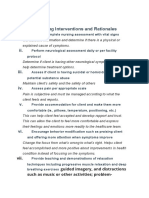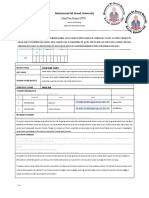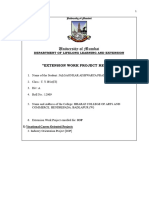0% found this document useful (0 votes)
45 views14 pagesOverthinking
The document outlines a comprehensive framework for overcoming overthinking and past thinking, detailing various strategies and techniques across eight chapters. Key topics include understanding the nature of overthinking, recognizing negative thought patterns, practicing mindfulness, reframing negative thoughts, and building self-awareness. The course aims to help individuals transition from overthinking to productive thinking, enhancing their mental health and overall well-being.
Uploaded by
abdulmalik.bsps806Copyright
© © All Rights Reserved
We take content rights seriously. If you suspect this is your content, claim it here.
Available Formats
Download as PDF, TXT or read online on Scribd
0% found this document useful (0 votes)
45 views14 pagesOverthinking
The document outlines a comprehensive framework for overcoming overthinking and past thinking, detailing various strategies and techniques across eight chapters. Key topics include understanding the nature of overthinking, recognizing negative thought patterns, practicing mindfulness, reframing negative thoughts, and building self-awareness. The course aims to help individuals transition from overthinking to productive thinking, enhancing their mental health and overall well-being.
Uploaded by
abdulmalik.bsps806Copyright
© © All Rights Reserved
We take content rights seriously. If you suspect this is your content, claim it here.
Available Formats
Download as PDF, TXT or read online on Scribd
/ 14














